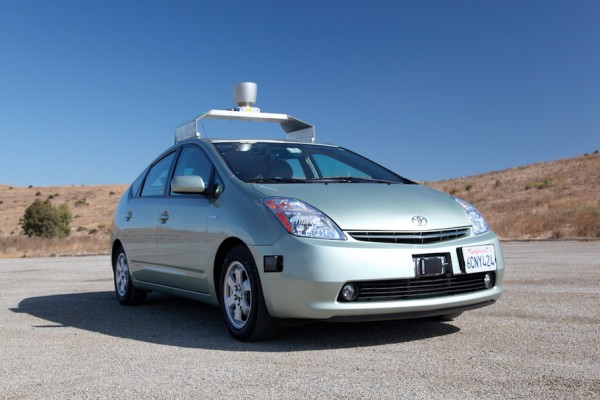Sometimes a news report can read more like science fiction than actual news.
A few days ago the state of Nevada, USA, gave technology giant Google a license to operate a car without driver. In fact, Nevada is currently the only state in America that allows driverless cars, thanks to considerable lobbying by Google.
The license was issued to a modified Toyota Prius, in effect making it the first car that has a drivers license. No science fiction here, real news. Google’s car is packed with technology that allows it to navigate, avoid obstacles and react to other cars on the road quicker than a human.
Of course the gimmick factor is very high with this. Google themselves are telling us that they have no plans to market driverless cars, it’s more technological showing-off than anything else. So you can’t run out and buy one just yet, in case you were already heading towards the door.
Google had been testing the 8 driverless cars for quite some time, albeit with a human driver present to take control just in case the computers would decide they wanted to make a run for the Mexican border. Testing was completely successful, only 1 minor accident was recorded and that is said to have been caused by another driver. Anyone who has ever driven a car in America will find this a plausible explanation.
I must admit, a driverless car makes the car enthusiast in me a bit worried. It gives me a feeling deep down in my stomach that something isn’t right. I don’t need a computer to control my car, always going exactly the speed limit, always taking the most predictably boring route to my destination. I wouldn’t mind if they invented some computers that would wash my car for me. Or change the tires. But the driving….I’d rather do that myself, thank you very much.
![]()
It’s probably a pride thing. We like to think ourselves the best driver in the world. Don’t argue with it, we just are. If a stupid computer that only understands 1 and 0 can do it, what does that make us? Or maybe the reason we drive cars is not that we just want to get to our destination. We want to enjoy the process of getting there. Granted, while making your way through traffic in Moscow that joy can be difficult to find, but you know what I’m trying to say.
We want to have some fun, and maybe give our female passengers a bit of a fright while we’re at it. It’s just impossible to imagine buying a Ferrari and then have it drive you around all by itself. Even if they add a button on the dashboard that will make it brea k the speed limit or make some noise standing at a red light, it’s just not quite right.
Maybe that’s why Google fit their technology to a Prius, a car no enthusiast on the planet would buy. It could be a subtle way of saying «don’t worry guys» we’re not after your cars.
And actually, I could see the positive side of that. Many people on the roads today don’t enjoy driving cars. They’re only doing it because they need to, and as a result they’re probably not very good at it. Give them driverless cars, and maybe all of a sudden we could be rid of cars doing half the speed limit in the left lane, or cars blocking the road because their owner quickly ran into a shop to buy some skin cream with seaweed extract.
Of course, if we’re serious for a minute (no longer, I promise) we can probably think about the benefits of this technology as well. We’re probably not going to get cars that you can’t drive yourself. At the most, this technology will be a kind of cruise control. Driving long distances, or when you’re getting tired, you can just turn to the car and say «take over for me please, Ronald». I think Ronald is a suitable name for a Toyota Prius. Don’t know why, I just do. Maybe we could also ask Ronald, while he’s driving, who the 4th president of France was. Or in which year did they invent cornflakes.
Google powered cars, maybe it’s not too silly after all.
![]()











